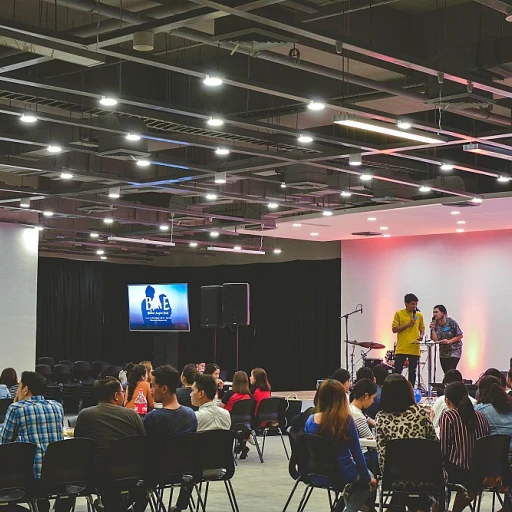Defining Task Efficiency Ratings
Getting to Grips with Task Efficiency Ratings
Understanding task efficiency ratings is critical in managing workflows and enhancing productivity in any business setting. These ratings provide insight into how effectively tasks are being completed, allowing management to identify areas for improvement and allocate resources efficiently. At its core, task efficiency assesses the amount of effort, time, and resources required to complete a task relative to the quality of the output. Essentially, it gauges how well a task is performed within a given time frame, impacting overall productivity in the workplace. To achieve a high efficiency rating, tasks must be managed effectively, considering time management, task batching, and project management strategies. By focusing on specific high-impact tasks, project managers can prioritize tasks based on their importance and urgency, ensuring that team members focus on tasks that bring the most value to the project. Moreover, factors such as the complexity of the tasks, available resources, and team dynamics play a significant role in influencing efficiency ratings. It's not only about achieving the desired outcome but also minimizing waste of resources such as time and labor during *work hours.* Integrating effective feedback mechanisms into your process can greatly influence task efficiency. Understanding these efficiency ratings aids in recognizing areas where productivity can improve, ultimately leading to a more efficient workplace environment. You can find more insights on how feedback drives engagement through this detailed blog post.Characteristics of High-Efficiency Tasks
Key Elements of Superior Task Execution
Certain tasks consistently stand out for their high efficiency ratings. Understanding the underlying characteristics can help businesses and project managers replicate such success across various projects.
The first element is the clarity of task objectives. Clearly defined goals ensure that team members are aligned and know what is expected, improving productivity efficiency. When everyone understands the 'why' behind a task, they are more likely to be motivated and focused, which minimizes time waste.
Effective time management plays a crucial role. Tasks that are planned and executed within structured time blocks allow employees to concentrate better and reduce cognitive load. This method, often referred to as task batching, groups similar activities, reducing transitions between unrelated tasks and enhancing work efficiency.
Resource availability is another critical factor. When employees have access to the right resources and tools, they can perform their tasks more efficiently. This includes everything from adequate training to the needed technology and supports that ensure smooth operations and quality output.
Moreover, tasks that can show immediate progress or real time impact tend to be more motivating. The ability to see how their work contributes to the project or team goal is empowering for employees, encouraging sustained effort and productivity.
Finally, fostering a team-oriented atmosphere can enhance work efficiency. When tasks are designed to benefit from collaborative efforts, leveraging diverse skills, the team can achieve superior results. Integrating mechanisms for strong social engagement, where team members actively support one another, further solidifies this impact.
For a deeper dive into how feedback influences these factors and drives higher task efficiency, consider exploring the impact of feedback mechanisms on employee engagement.
Role of Employee Skills and Competence
Influence of Skills and Competence on Task Efficiency
In the workplace, each employee's skills and competence significantly impact the efficiency of their tasks. Skillsets are foundational to the successful completion of tasks, affecting not only productivity but also the quality of work being produced. High-efficiency tasks are often characterized by their ability to be completed accurately and swiftly by team members who possess the relevant skills. The competence of an employee is pivotal when assessing task efficiency. Competent employees can navigate through their day with effective time management, wisely allocating time blocks for each task. This not only enhances their work efficiency but also allows them to tackle complex project components with ease. Enhanced productivity efficiency often results from employees being well-versed in their respective domains. Moreover, the level of competence directly impacts the efficiency workplace environment. Employees with high competence levels contribute to faster problem-solving and decision-making processes, which can ultimately lead to a high impact on business outcomes. Task batching becomes more efficient as these employees can understand and execute task-based processes effectively, maximizing the overall productivity within the team. For project managers, it is important to recognize these skill variances among team members and assign tasks based on individual strengths. This task-based approach to management ensures that the team's combined efforts yield the most efficient results. Real-time feedback mechanisms can also help in identifying areas where additional training or resources might be needed for certain employees, enhancing the long-term productivity efficiency of the project. Effective employee feedback mechanisms, as discussed in a comprehensive analysis, are crucial for supporting this skill growth and competence development. By consistently evaluating and communicating with employees, businesses can ensure that they continue to develop their team's competencies to meet the evolving demands of tasks and projects.Impact of Tools and Resources
The Role of Resources in Boosting Task Productivity
In any business setting, having the right resources can dramatically increase the productivity and efficiency of tasks. Efficient time management and effective use of resources are key factors enabling teams to reach high levels of productivity. Project managers and team members alike benefit from a well-equipped workplace, where tools facilitate rather than hinder work processes.
Resources in the workplace can range from tangible tools and technology to intangible support systems. Proper equipment and up-to-date technology make it possible for employees to complete their tasks more swiftly and with fewer errors, greatly reducing time tasks and contributing to productivity efficiency. For instance, the use of project management software can streamline processes, ensuring tasks are completed promptly and keeping all team members updated in real time. This allows for better time blocks in their day-to-day operations, increasing both team efficiency and task quality.
Access to high-quality resources has a direct impact on the overall performance of a team. Tools that support task batching help manage workloads and reduce the time task demands, ultimately leading to improved work efficiency. It is crucial for management to consistently evaluate and update resources to maintain high productivity and meet the evolving needs of employees as they tackle various projects.
In addition, the social media environment is an ever-present factor in today’s workplace, requiring resources that help manage its impact on productivity. Implementing tools that filter content can help maintain focus on work-related tasks while optimizing the creative potential of team members for tasks with high impact.
Ultimately, the success of a business is deeply tied to the quality and availability of its resources. By providing adequate resources, businesses can enhance productivity efficiency, ensuring that high-efficiency tasks remain achievable and sustainable for the long term.
Feedback Mechanisms and Their Influence
The Vital Role of Constructive Feedback
One of the most crucial elements in achieving a high efficiency rating for tasks involves a well-structured feedback mechanism. Constructive feedback helps teams identify areas of improvement, streamline processes, and optimize resources efficiently, ultimately leading to enhanced productivity in the workplace.
Setting up an effective feedback system requires understanding the needs of your team and business. By regularly soliciting input from employees, management can ensure that any barriers to efficiency are promptly addressed.
- Continuous Improvement: Ongoing feedback cultivates an environment where employees feel engaged and motivated. This continuous loop of communication ensures that workplace practices remain aligned with productivity goals.
- Real-Time Adjustments: Feedback collected over short time blocks allows for quick adjustments to tasks, yielding immediate improvements in efficiency. Project managers can adapt work strategies based on team input, enabling more dynamic management.
- Task-Based Feedback: Focused responses on specific tasks provide actionable insights that improve task completion times and quality of work. Employees can better understand their impact on business outcomes and adjust their work methods accordingly.
By leveraging these strategies, teams can enhance the quality of projects accomplished each day. The impact of timely feedback is profound—it not only helps employees improve but also supports long-term business growth and efficiency.
Strategies to Improve Task Efficiency Ratings
Elevating Task Efficiency in the Workplace
Improving task efficiency isn't just a one-time effort. It's a continuous process that involves various strategies aimed at enhancing the overall performance of tasks and workforce. Below are some methods to boost efficiency ratings for tasks, leading to a more productive work environment.
- Implementing Time Management Techniques: Using time blocks to allocate specific periods for focused work can significantly enhance productivity. This approach minimizes distractions and maximizes the impact of each work segment.
- Enhancing Employee Skills: Investing in training and development programs tailored to enhance the skills and competence of employees ensures that tasks are completed efficiently. This ties back into understanding the role of skills discussed earlier, emphasizing the importance of continual growth.
- Adopting Task Batching: Grouping similar tasks together allows employees to maintain momentum and reduce the mental load of task switching. This is especially useful in project management where task-based approaches can streamline operations.
- Optimizing Resource Allocation: Ensuring that the team has access to the necessary tools and resources significantly impacts work efficiency. Proper management of these resources supports high-quality outputs in real-time.
- Incorporating Feedback Mechanisms: Regular feedback loops enable management to identify inefficiencies and make informed decisions to address them. This plays a vital role in ensuring that processes remain efficient and that the team members stay motivated.
- Encouraging High-Impact Task Identification: Encouraging employees to prioritize tasks based on their impact helps focus the team's efforts on work that offers the highest return on investment for the business.
Employing a combination of these strategies can lead to noticeable improvements in task efficiency ratings, helping teams achieve long-term success and maintain high levels of productivity across the board. Effective management and thoughtful implementation of these strategies are key to creating an atmosphere where efficiency thrives.




